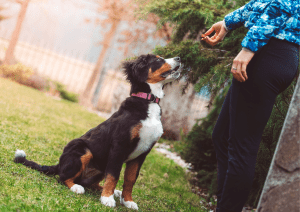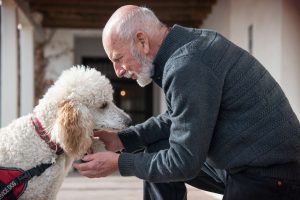
The holidays are a joyous time filled with festivities, but as pet owners, it’s crucial to be mindful of our four-legged companions. Wondering how to make this season safer and more enjoyable for your pets? Read on for practical tips that prioritize their well-being.
Understanding Holiday Hazards for Pets
As we delve into the holiday season, it’s crucial to grasp the potential hazards that may compromise our pets’ safety. Festive decorations, while visually appealing, can harbor risks for our furry companions. Tinsel, often adorning trees, may be enticing but poses a threat if ingested, along with certain ornaments and plants. Lights and candles, integral to the festive ambiance, require cautious consideration as they can be hazardous to pets. Recognizing these potential dangers allows us to proactively safeguard our pets, ensuring a joyful and stress-free holiday experience for both them and us.
Pet Safety During Holiday: Tips for a Joyful and Hazard-Free Celebration
Create a Pet-Friendly Decor
To kick off our expert tips, let’s focus on making your decorations safe for pets. Opt for non-toxic materials when decorating. Replace traditional ornaments with pet-safe alternatives, and be cautious with tinsel, which can be harmful if ingested.
Creating a pet-friendly environment also involves considering your pet’s stress levels. Dogs and cats may find the hustle and bustle of the holidays overwhelming. Designate a quiet, cozy space where they can retreat if the festivities become too much.
Establish a Safe Retreat Space
Even the most sociable pets need a break from the holiday hustle. Designating a secure haven allows your pet to unwind away from the hustle and bustle. Consider allocating a room equipped with their familiar bed, cherished toys, and a readily available water bowl. Effectively communicating the significance of this space to guests fosters a pet-friendly atmosphere, ensuring a harmonious coexistence between the holiday cheer and your pet’s need for a serene refuge. Creating this designated retreat spot ensures your pet feels comfortable and stress-free amid the joyful chaos of holiday gatherings.
Mindful Feasting for Pets
Now, let’s shift our focus to the holiday feast. Many festive foods can be harmful to pets, ranging from chocolate to certain spices. It’s tempting to share the joy with our furry friends, but exercise caution. Stick to pet-friendly treats and avoid feeding them from the table.
Informing guests about your pet’s dietary restrictions is equally important. Not everyone may be aware of the potential dangers certain foods pose to pets. This proactive approach ensures a safer dining experience for your pet during holiday gatherings.
Monitoring Your Pet During Celebrations
Amidst the celebrations, it’s crucial to keep a watchful eye on your pet. Look for signs of stress, such as pacing, hiding, or excessive grooming. If your pet displays any unusual behavior, take a break from the festivities and spend some calming time with them.
Adjusting the celebration to meet your pet’s needs is a thoughtful way to ensure their well-being. If your dog is uncomfortable around loud noises, consider using white noise or calming music. Small adjustments can make a significant difference in your pet’s holiday experience.
Exercise Caution with Decorative Plants
While decking the halls, a mindful approach to plant choices ensures the safety of our furry friends. Common holiday plants like poinsettias and holly, while visually striking, can pose potential threats if ingested by pets. Opting for pet-safe alternatives, such as spider plants or ferns, provides a festive ambiance without compromising your pet’s well-being. This careful consideration not only enhances the aesthetics of your holiday décor but also guarantees a hazard-free environment for your cherished companions. Choose greenery wisely, and let the beauty of the season coexist harmoniously with your pet’s safety and enjoyment.
Handling Fire and Decorative Lights
Navigating the allure of candles and decorative lights during festivities requires thoughtful consideration for our curious pets. While these elements add to the festive ambiance, they can present risks. Vigilance is key—keep a watchful eye on your pet around open flames, ensuring their safety. Opting for flameless candles or pet-safe LED lights offers a safer alternative without sacrificing the holiday glow. Equally important is securing electrical cords, preventing potential accidents by keeping them out of your pet’s reach. By exercising caution with these festive accents, you can enjoy a luminous and safe holiday season for both you and your furry companions.
Prepare for Unpredictable Situations
Anticipating the unexpected is a crucial aspect of ensuring your pet’s well-being during the holiday hustle. Even with thorough preparation, unforeseen situations can arise. Establishing a plan for emergencies becomes paramount in these instances. Keep key contacts easily accessible—store the contact information for your veterinarian and the nearest emergency veterinary clinic where it can be swiftly retrieved. Additionally, familiarize yourself with common signs of distress in pets. Acting promptly if you observe anything unusual can make a significant difference in handling unforeseen circumstances, ensuring a swift and effective response to keep your pet safe during the holiday season.
FAQ: Can I Give My Pet Leftover Holiday Food?
While it’s tempting to share the holiday feast with your furry friend, exercise caution when it comes to leftovers. Certain holiday foods, like bones, fatty cuts, and seasoned dishes, can be harmful to pets. Stick to pet-friendly treats, and if you’re inclined to share, opt for plain, unseasoned meats or vegetables in moderation. Always consult your veterinarian if you’re unsure about specific foods, ensuring a safe and delightful holiday treat for your pet.
Crafting a Safe and Joyful Holiday Season for You and Your Pets
As the festive season unfolds, ensuring the safety and well-being of your pets becomes a heartwarming part of the celebrations. By adopting the expert tips provided in this guide, you can transform your home into a haven where joy thrives and hazards are minimized. From creating pet-friendly decor to preparing for unpredictable situations, every step taken contributes to a holiday season that is not only merry for you but also a delight for your four-legged companions.
In the spirit of the season, let the bond with your pets be a source of joy and comfort. Remember, a thoughtful approach to pet safety enhances the overall holiday experience, making it a time of shared happiness for the entire family. Embrace these tips, prioritize your pet’s well-being, and revel in a festive season filled with love, warmth, and the joyous presence of your cherished furry friends. Here’s to a holiday season that is both memorable and safe for every member of your household, including those with paws and tails.







